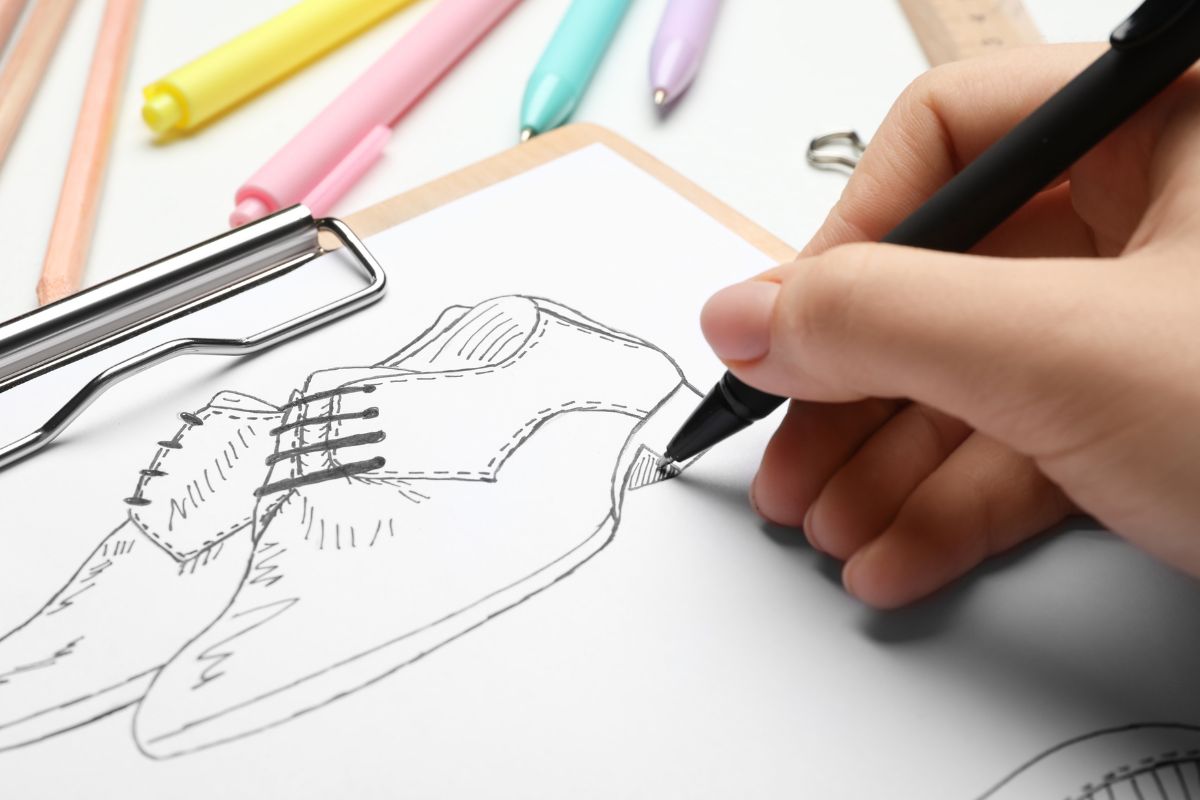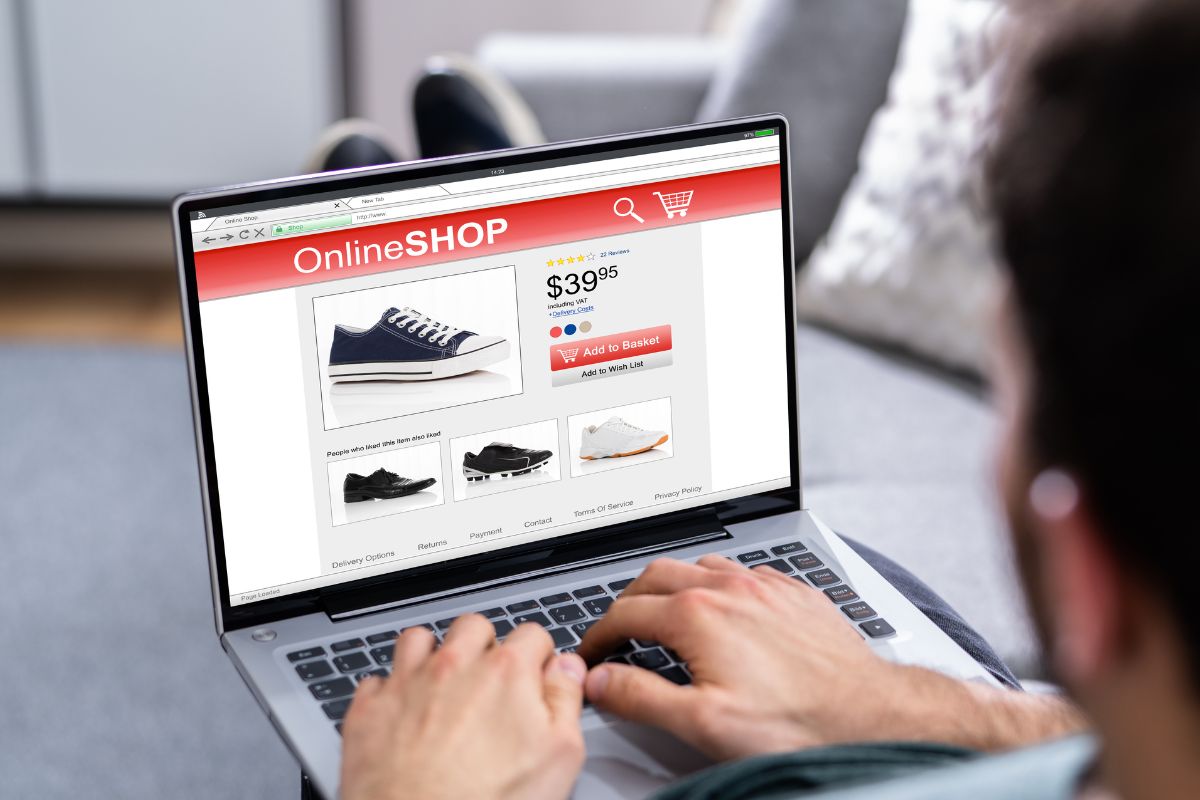Starting a shoe business can be an exciting opportunity for anyone passionate about footwear. It allows you to share your unique style while tapping into a huge market that constantly demands new and innovative products.
To successfully launch a shoe business, you need to develop a clear business plan, identify your niche, and understand the needs of your target audience.
Table of contents
Research is essential for your success. You should look into market trends, your competition, and potential startup costs. Understanding the landscape will help you make informed decisions.
From designing to manufacturing, each step is vital in building a brand that stands out.
Engaging with customers through social media and a well-designed website can significantly boost your visibility. Creating a strong online presence is a smart way to draw in potential buyers and establish trust in your brand.
With careful planning and creativity, you can turn your shoe business dreams into reality.
Understanding the Shoe Industry
To succeed in the shoe business, you must have a solid grasp of the current market landscape. This includes market research, analyzing competition, and identifying your target audience. Each of these components plays a critical role in shaping your brand strategy.
Market Research and Trends
Conducting market research is the first step in understanding the footwear market. You need to gather data on current fashion trends and consumer preferences.
Look into popular styles, colors, and materials that are trending each season.
Utilize online tools to analyze market trends. Resources like Google Trends can give you insights into what consumers are searching for.
Additionally, visit local stores to observe bestselling products. This information helps pinpoint gaps in the market and opportunities for your own shoe business.
Make sure to identify the niche markets that align with your interests. Are you looking to cater to athletic footwear, casual shoes, or perhaps eco-friendly options? Understanding these specifics can set the foundation for a compelling brand identity.
Competition Analysis
Analyzing your competition is essential in the shoe industry. Start by identifying your main competitors in the market. Look at their strengths, weaknesses, and product offerings. This will help you understand the competitive landscape and where you might fit in.
Create a table to compare your competitors based on key factors such as pricing, quality, and customer service. This visual aid can reveal areas where you can differentiate your brand.
Remember, the goal is to identify the gaps your competition has left open. Whether it’s a specific style of shoe that is underrepresented or a unique customer experience, find ways to make your brand stand out in a crowded market.
Identifying Your Target Audience
Knowing your target audience ensures your marketing efforts are effective. Start by creating a buyer persona that includes demographic information like age, gender, and location.
Next, delve into their preferences regarding footwear. Are they looking for comfort, style, or functionality? Understanding these preferences will help you tailor your product offerings.
Consider utilizing surveys or focus groups to gather direct feedback from potential customers. This can provide invaluable insights into their motivations for buying shoes.
By clearly defining your target audience, you will be better equipped to meet their needs and exceed their expectations.
Planning Your Shoe Business
| Step | Details |
|---|---|
| 1. Market Research | Analyze trends, customer preferences, and competitors to find your niche. |
| 2. Define Your Niche | Choose a specialty—luxury, athletic, casual, sustainable, or custom shoes. |
| 3. Business Plan | Outline goals, budget, target audience, and revenue model. |
| 4. Legal Setup | Register your business, get necessary licenses, and trademark your brand. |
| 5. Source Materials & Manufacturers | Decide whether to produce in-house, work with manufacturers, or use print-on-demand. |
| 6. Product Design & Prototyping | Create prototypes using CAD software or partner with designers. |
| 7. Pricing Strategy | Set competitive prices based on production costs, market demand, and profit margins. |
| 8. Branding & Packaging | Develop a strong brand identity, including logo, colors, and unique packaging. |
| 9. Sales Channels | Sell via a website, online marketplaces (Amazon, Etsy), or retail stores. |
| 10. Marketing & Promotion | Use social media, influencer partnerships, and SEO strategies to attract customers. |
| 11. Logistics & Distribution | Plan shipping, warehousing, and customer fulfillment strategies. |
| 12. Launch & Growth | Start with a soft launch, collect feedback, and scale the business strategically. |
Successful planning is essential for starting your shoe business. This involves creating a solid business plan, developing your brand identity, choosing the right business structure, navigating legal registration, and securing funding. Each of these steps contributes to building a strong foundation for your venture.
Crafting a Business Plan
Your business plan is a roadmap for your shoe business. Start with an executive summary that outlines your vision and goals. This should grab attention and highlight what makes your idea unique.
Next, include a market analysis to understand your target audience and competitors. Identify trends in the footwear industry and customer preferences.
In the financial projections section, detail your expected startup costs and revenue. Outline your business model, whether you will sell online or in physical stores. Be realistic about potential profits to attract investors.
Brand Identity Development
Creating a strong brand identity sets you apart in a competitive market. Start by defining your brand values. What do you want your customers to feel when they think of your shoes?
Design a memorable logo and choose a consistent color scheme that reflects these values. These elements will be vital in your branding efforts across all platforms.
Make sure your brand identity resonates with your target audience. This connection fosters loyalty and encourages return customers.
Choosing Your Business Structure
Selecting the right business structure is crucial for your shoe business. The most common options include:
- Sole Proprietorship: Easiest to set up, suits single owners.
- Limited Liability Company (LLC): Protects your personal assets, offers more flexibility.
- Corporation: Suitable for larger businesses, may require more regulations.
Evaluate factors like personal liability, tax implications, and the number of owners when making this choice. The right structure protects your interests and supports future growth.
Registration and Legal Considerations
Once you choose your business structure, register your business name. This ensures your brand is legally recognized and helps avoid trademark issues.
Research your local regulations regarding business registration. You may need to acquire permits or licenses, depending on your location.
It’s also wise to think about limited liability protection. Consider drafting operating agreements for LLCs or corporate bylaws. These documents outline governance and protect your interests.
Securing Funding
Funding is necessary to get your shoe business off the ground. Start by figuring out your startup costs, including materials, production, and marketing.
Once you have a clear picture of expenses, you can explore several funding options:
- Personal Savings: Use your own money for initial investments.
- Investors: Pitch your business plan to attract investors.
- Loans: Consider small business loans from banks or credit unions.
Be prepared to show your financial projections and business model to convince potential funders. Demonstrating clear returns on investment will help secure the funds you need.
Developing Your Shoe Line

Creating a successful shoe line involves thoughtful design and careful manufacturing choices. It’s crucial to focus on specific types of shoes that fit your target market while ensuring quality throughout the process.
Shoe Design and Development
When starting your shoe line, begin with clear designs that reflect your brand’s identity. You should consider styles like athletic shoes, heels, or custom shoes based on your niche. Sketch initial ideas and utilize design software to create digital prototypes.
It’s important to prioritize comfort alongside fashion. Consider features like arch support, materials, and the shoe’s overall fit.
Conduct surveys or focus groups to gather feedback on your designs. This input can help fine-tune your offerings to better match customer preferences.
Manufacturing and Sourcing Materials
Choosing the right manufacturers and sourcing quality materials is critical for your shoe line. Research suppliers who specialize in footwear production and offer sustainable options if that aligns with your brand. Look for manufacturers with a record of good quality and reliability.
Be prepared to order samples before committing to larger production runs. Collaborating closely with suppliers ensures you can maintain control over the materials used and the production timeline. This step is vital to creating shoes that are both stylish and durable.
Quality Control
Establishing a robust quality control process is essential to ensure your shoes meet high standards. Schedule regular inspections during production to catch any issues early.
Create a checklist that covers material quality, stitching, and comfort.
After production, test your shoes by wearing them in real-world scenarios to assess their performance. Gathering feedback from customers who try your shoes can also reveal areas for improvement.
Addressing quality concerns will enhance your brand’s reputation and encourage customer loyalty.
Setting Up the Business

Starting your shoe business involves crucial steps such as creating an online store, preparing your physical location, choosing a name, and managing your inventory effectively. Each of these steps requires careful planning to ensure your business venture is successful.
Establishing an Online Store
Creating an online store is essential for reaching a broader audience. Choose an ecommerce platform that fits your needs. Some popular options include WooCommerce for WordPress or Shopify for its user-friendly interface.
When setting up your store, focus on these key elements:
- Design: A clean, attractive design helps attract customers. Use high-quality images of your shoes.
- Payment Options: Offer multiple payment methods like credit cards and PayPal to accommodate different customers.
- Shipping: Clearly outline your shipping policies and costs to build trust.
Make sure your online store is mobile-friendly since many customers shop on their phones.
Preparing Physical Location
If you plan to have a physical location, choose a spot that receives good foot traffic. This can significantly influence your store’s success. Look for areas near shopping centers or busy streets.
Consider these factors:
- Startup Costs: Factor in rent, utilities, and any renovations needed.
- Store Layout: Create a welcoming layout that showcases your shoe collection effectively.
- Signage: Good signage is essential for drawing in customers. Make it clear and easy to read.
Your physical location complements your online presence, so ensure it aligns with your brand.
Choosing a Business Name
Your business name is your brand’s identity. It should be unique, memorable, and reflective of your style.
- Brainstorm: Think of names that resonate with your target market.
- Check Availability: Ensure the name isn’t already in use. Check domain availability for your online store.
- Short and Sweet: A shorter name is often easier for customers to remember.
A strong name contributes to a solid brand image, increasing your chances of success in a competitive market.
Inventory Management
Effective inventory management is key to maintaining a successful shoe business. You need to keep track of your stock to avoid overbuying or running out of popular items.
Consider these inventory management practices:
- Stock Levels: Regularly check your stock levels to ensure you have enough of each style.
- Sales Analysis: Analyze past sales data to understand which products sell best.
- Suppliers: Build good relationships with suppliers for timely restocks and better deals.
Utilizing inventory management software can simplify this process, helping you focus on growing your business.
Marketing and Sales Strategies
| Strategy | Details |
|---|---|
| 1. Brand Positioning | Define your unique value—comfort, luxury, affordability, or sustainability. |
| 2. Social Media Marketing | Use Instagram, Facebook, and TikTok for engaging content, influencer collaborations, and paid ads. |
| 3. Influencer & Celebrity Endorsements | Partner with influencers and celebrities to showcase your shoes. |
| 4. SEO & Content Marketing | Optimize product pages, start a blog on shoe trends, and use keywords for organic traffic. |
| 5. Email Marketing | Build a list and send promotions, new arrivals, and personalized recommendations. |
| 6. Paid Advertising | Run targeted ads on Google, Facebook, and Instagram to drive traffic. |
| 7. Affiliate & Referral Programs | Offer commissions to affiliates and discounts for customer referrals. |
| 8. Retail & Pop-up Stores | Set up temporary shops to create buzz and allow customers to try before buying. |
| 9. Limited-Edition & Seasonal Collections | Create urgency with exclusive drops, seasonal themes, and pre-order strategies. |
| 10. Customization & Personalization | Offer custom designs, colors, and engraved initials for a premium experience. |
| 11. Wholesale & B2B Sales | Sell in bulk to boutiques, online retailers, and department stores. |
| 12. Loyalty Programs & Discounts | Implement rewards points, repeat purchase discounts, and VIP memberships. |
| 13. User-Generated Content | Encourage customers to share photos and reviews on social media. |
| 14. Augmented Reality (AR) Try-Ons | Use AR technology to let customers try shoes virtually. |
| 15. International Expansion | Localize marketing strategies and offer global shipping. |
Creating effective marketing and sales strategies is essential for your shoe business. These strategies will help you reach your target customers and boost your sales. A solid marketing plan, the right sales channels, and a well-thought-out pricing strategy can significantly impact your business success.
Developing Your Marketing Plan
Start by identifying your target customers. Understand their demographics, preferences, and buying behaviors. This information helps you tailor your marketing efforts to attract them effectively.
Create a marketing plan that includes both traditional and digital methods. You should consider:
- Social Media Marketing: Use platforms like Instagram and Facebook to showcase your shoe line. Post engaging content, such as images, videos, and customer testimonials to attract followers.
- Email Campaigns: Send newsletters and promotions to keep your audience informed about new products and offers.
- Collaborations: Partner with influencers or other brands to expand your reach and credibility.
Make sure your marketing plan aligns with your brand values and voice.
Sales Channels and Distribution
Selecting the right sales channels is crucial to your business. Depending on your target audience, you may choose various platforms for reaching customers. Consider these options:
- Online Sales: Set up an e-commerce website for direct sales. This gives you a wider reach and allows for easy customer interaction.
- Retail Partnerships: Consider partnering with local boutiques or larger retail stores to expand your physical presence.
- Pop-Up Shops: Host temporary sales events to build local brand awareness.
Each channel has its advantages and challenges, so choose those that fit best with your brand and customer behavior.
Pricing Strategy
Determining the right prices for your products is vital for profitability.
Your pricing strategy should consider both costs and market positioning.
Some strategies to consider include:
- Cost-Plus Pricing: Calculate your total costs and add a fixed profit margin.
- Value-Based Pricing: Set prices based on perceived value to customers rather than just costs.
- Competitive Pricing: Analyze competitors’ prices to find a competitive yet profitable price point.
Always stay mindful of how your pricing reflects your brand.
In addition, regularly review your prices based on market trends and customer feedback to maintain competitiveness and adjust margins if needed.
Expansion and Growth

To grow your shoe business, consider various methods like wholesale, dropshipping, and print on demand.
Adapting to market trends is also crucial for long-term success.
Each of these strategies can help you reach more customers and increase sales.
Exploring Wholesale and Dropshipping
Wholesale can expand your distribution network effectively. By partnering with retailers, you can sell your shoes in bulk.
This approach often leads to higher sales volumes and a steady cash flow. Choose retailers that align with your brand and target market.
Dropshipping is another effective option. It allows you to sell shoes without holding inventory.
When a customer places an order, the product is shipped directly from the supplier. This model reduces overhead costs and risk.
Focus on partnerships with reliable suppliers for quality service.
Leveraging Print on Demand
Print on demand (POD) allows you to create custom shoe designs without investing in a large inventory.
You can offer unique styles tailored to customer preferences. This approach helps you test new designs and market trends without significant upfront costs.
To leverage POD, choose a reputable service that handles production and shipping.
Ensure they provide high-quality materials and a quick turnaround. Marketing your unique designs effectively can attract niche audiences and foster brand loyalty.
Adapting to Changing Markets
Staying updated with market trends is essential for growth. Trends can shift rapidly; being adaptable helps you stay relevant.
Conduct regular market research to identify new opportunities.
Monitor customer feedback and analyze your competitors. This information can guide adjustments to your product line.
Consider seasonal shifts, popular styles, and consumer preferences. By aligning your offerings with current trends, you enhance your chances of success.
Sustainability and Ethical Practices
| Practice | Details |
|---|---|
| 1. Sustainable Materials | Use recycled rubber, organic cotton, plant-based leather, and biodegradable materials. |
| 2. Ethical Sourcing | Ensure fair labor practices and source raw materials from certified ethical suppliers. |
| 3. Eco-Friendly Production | Reduce water and energy usage, minimize chemical dyes, and adopt zero-waste techniques. |
| 4. Carbon Footprint Reduction | Offset emissions through carbon-neutral shipping and green manufacturing. |
| 5. Vegan & Cruelty-Free Shoes | Avoid animal-based materials and opt for synthetic, sustainable alternatives. |
| 6. Circular Economy Initiatives | Offer shoe recycling programs, reselling platforms, or refurbishing services. |
| 7. Transparent Supply Chain | Maintain full visibility into production and work with third-party sustainability auditors. |
| 8. Ethical Labor Practices | Pay fair wages, provide safe working conditions, and avoid child or forced labor. |
| 9. Sustainable Packaging | Use biodegradable, recycled, or minimal packaging to reduce waste. |
| 10. Social Responsibility | Partner with non-profits, support local communities, and donate to sustainability causes. |
Building a sustainable shoe business involves careful planning around materials and manufacturing processes.
You need to prioritize eco-friendly footwear options and ensure ethical manufacturing throughout your supply chain.
Eco-Friendly Footwear
Choosing the right materials is crucial for creating eco-friendly shoes. You might consider using:
- Recycled Materials: Incorporate recycled plastics or fabrics to reduce waste.
- Organic Materials: Use GOTS-certified organic cotton or bamboo, which have a lower impact on the environment.
- Sustainable Leather Alternatives: Options like mushroom leather or other vegan materials offer a sustainable alternative to traditional leather.
These choices not only help the environment but can also improve your brand’s image.
Consumers are increasingly looking for quality, sustainable products, and your commitment to eco-friendly practices can help you stand out in a competitive market.
Ethical Manufacturing
Your commitment to ethical manufacturing is just as important as the materials used. This means ensuring fair labor practices throughout your supply chain.
Focus on the following:
- Fair Wages: Pay workers a living wage to support them and their families.
- Safe Working Conditions: Ensure that factories are safe and comply with labor laws.
- Transparency: Be open about your manufacturing processes and sources. This builds trust with consumers.
Working with manufacturers who prioritize these practices not only promotes integrity in your brand but also appeals to conscious consumers.
As you grow your business, a focus on ethics can differentiate you from competitors that may not prioritize similar values.
Building Customer Relationships

Building strong customer relationships is essential for your shoe business.
Focus on providing great service and improving your products based on feedback. This not only enhances customer loyalty but also strengthens your brand identity.
Customer Service and Experience
Excellent customer service starts with training your team. Ensure they understand your brand values and can assist customers effectively.
Consider using a friendly approach and active listening to make customers feel valued.
Create a welcoming environment in your store or online platform. Simple touches, such as free fittings or personalized recommendations, can enhance the customer experience.
You can also implement easy return policies. When customers know they can return items without hassle, they are more likely to trust your brand. This trust can boost customer loyalty and increase word-of-mouth referrals.
Gathering Feedback and Improving Offerings
To build lasting relationships, actively gather customer feedback. Use tools such as surveys, suggestion boxes, or online reviews.
This information is valuable for understanding what your customers want.
Once you collect feedback, analyze the results. Identify common themes and trends related to your products and services. Make changes where necessary to improve your offerings.
Consider rewarding customers for their input. This could be through discounts or loyalty points. Showing appreciation makes customers feel involved in your brand.
By continuously refining your products based on customer insights, you strengthen your market position and attract your target audience more effectively.
Final Thoughts
Starting a shoe business can be an exciting journey. You have the chance to create a brand that reflects your vision.
Remember that careful planning will help you succeed.
Key Steps to Keep in Mind:
- Research Your Market: Understand what customers want.
- Choose a Niche: Pick a specific type of shoe to focus on.
- Develop a Business Plan: Outline your goals and strategies.
- Select Suppliers: Find reliable sources for your materials or products.
- Build an Online Presence: Use social media and a website to reach customers.
Don’t rush the process. Take your time to analyze the competition and identify what makes your business unique.
Providing quality products will set you apart.
Connecting with your audience is vital. Engage with customers through social media and email to build loyalty. A strong brand story can make them feel connected to you.
Finally, stay adaptable. The shoe market can change quickly. Be ready to adjust your strategies based on trends and customer feedback.
FAQs
1. How do I start a shoe business?
Starting a shoe business involves market research, selecting a niche, sourcing materials or suppliers, and setting up an online store. Check out our Step-by-Step Guide on Starting a Shoe Business to learn more.
2. What are some jaw-dropping custom shoe ideas I can try myself?
From hand-painted sneakers to embroidered boots, the possibilities for DIY custom shoes are endless. Browse our 10 Jaw-Dropping Custom Shoe Ideas You Can DIY for inspiration.
3. How can I create my own custom shoes?
Whether you’re hand-painting or using a print-on-demand service, making custom shoes requires creativity and the right tools. Follow our Step-by-Step Guide on Creating Your Own Custom Shoes to get started.
4. How much does it cost to customize a pair of shoes?
The cost varies depending on the method you choose, whether it’s DIY or using a manufacturer. Read our Custom Shoe Costs Guide to find out what to expect.
5. What are the best print-on-demand shoe suppliers?
If you’re looking for hassle-free production and shipping, print-on-demand suppliers can be a great option. Explore our list of Top Print-on-Demand Shoe Suppliers to find the right partner.
6. How can custom shoes help elevate my style?
Custom shoes allow you to showcase your personality, stand out, and create one-of-a-kind footwear. Discover more in our article Elevate Your Style with Unique Custom Shoes.



